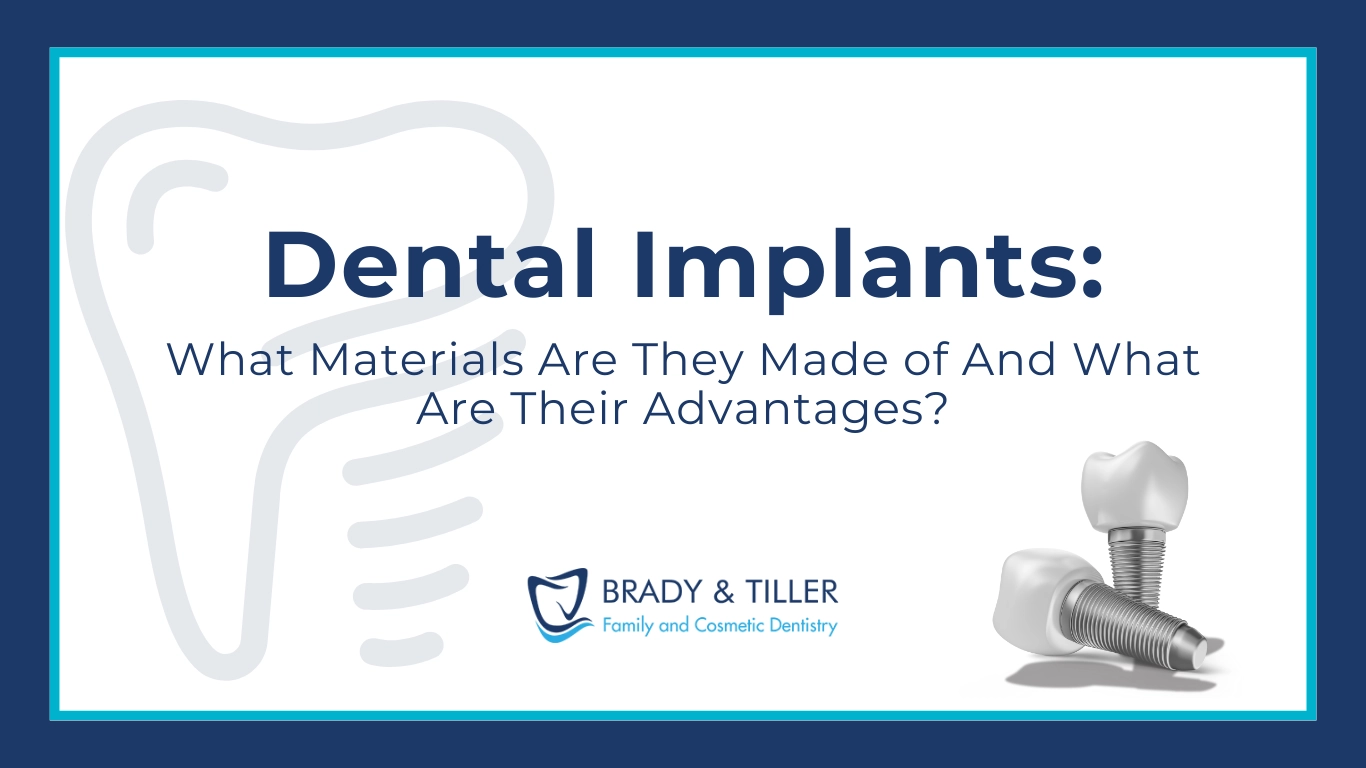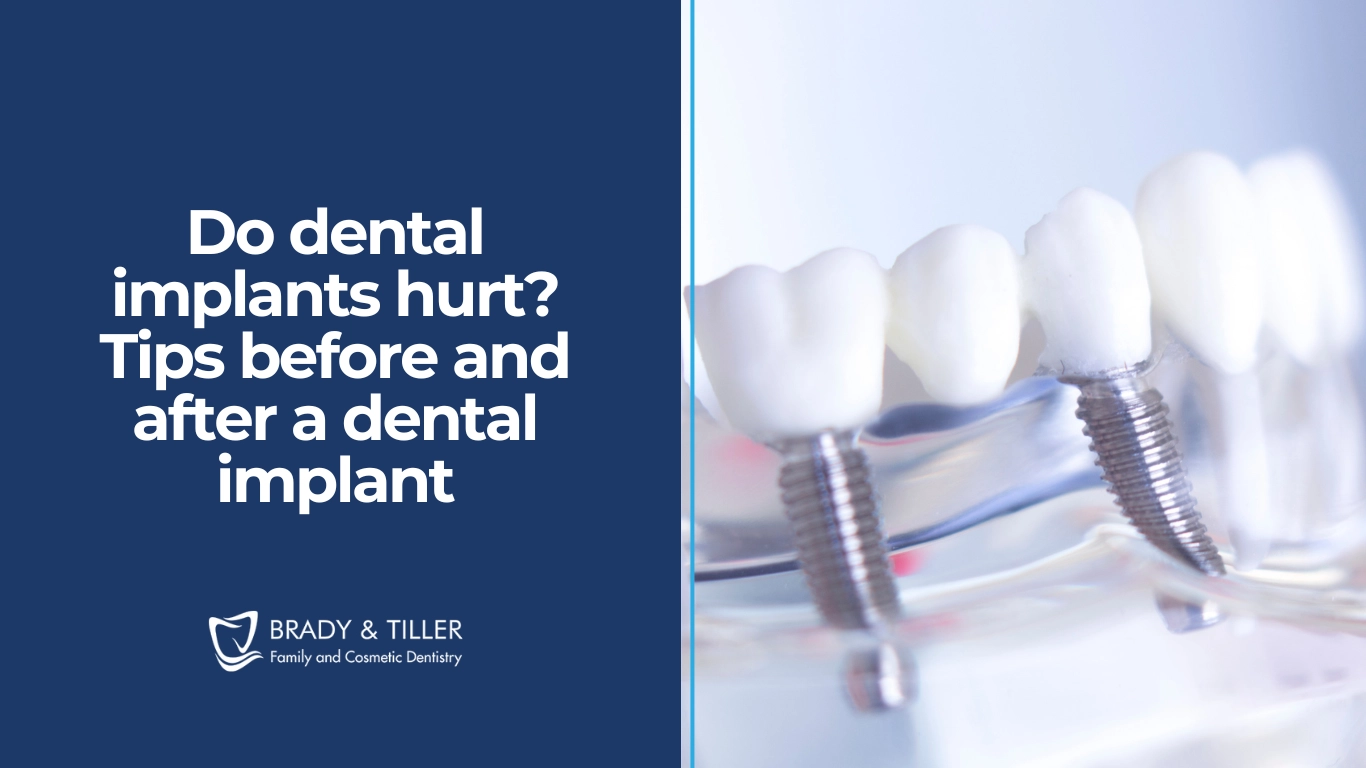When a tooth is damaged, weakened, or even lost, dental crowns and bridges are effective solutions that restore both the functionality and appearance of your smile. These dental solutions are attached to natural teeth or dental implants to provide a long-lasting, aesthetically pleasing result. But how exactly do crowns and bridges adhere to the teeth, and what are the differences between these treatments?
At Brady & Tiller Family and Cosmetic Dentistry, our priority is to offer you treatment options that are not only effective but also comfortable and safe. In this blog, we’ll explain how dental crowns and bridges work, the process of placing them, and the differences between both treatments.
What Are Dental Crowns and Bridges?
First, it’s important to understand what crowns and bridges are.
Dental crowns are “caps” or “covers” that encase a damaged or weakened tooth to restore its shape, size, strength, and appearance. They are often used when a tooth has a large cavity, is broken, or has been damaged by a root canal treatment. Crowns are also an excellent option for covering teeth that have been weakened by a large filling.
Dental bridges are structures that replace one or more missing teeth. They consist of artificial teeth anchored to the adjacent natural teeth or, in some cases, to dental implants. Bridges are used to restore both the appearance and functionality of the bite, preventing the adjacent teeth from shifting and causing other dental issues.
The Process of Placing Crowns and Bridges
How Are Crowns Adhered to Teeth?
The process of placing a crown begins with a visit to the dentist to evaluate the need for the treatment and take X-rays. Once it’s determined that a crown is the right option, the dentist prepares the affected tooth. This involves removing part of the original tooth to make room for the crown to fit properly and comfortably.
Next, an impression of the prepared tooth is taken to create a custom crown that fits perfectly in the shape of your tooth. This mold is sent to a dental lab where the crown is made. Crowns can be made from various materials, such as ceramic, porcelain, metal, or a combination of these, depending on your needs and preferences.
While the permanent crown is being made, the dentist will place a temporary crown to protect the tooth. When the permanent crown is ready, it is placed over the prepared tooth and bonded with a strong dental cement. This cement ensures that the crown stays securely in place for the long term.
How Are Bridges Adhered to Teeth?
The process of placing a bridge starts similarly to the crown placement process. The dentist prepares the adjacent teeth that will serve as the anchors for the bridge. These teeth are slightly reduced to allow the bridge to fit properly.
Once the anchor teeth are ready, an impression of your mouth is taken to create a custom bridge. The bridge typically consists of a false tooth in the center, with crowns placed on the adjacent teeth.
Like crowns, a temporary bridge is placed while the permanent bridge is being made. Once it’s ready, the dentist adjusts the bridge to ensure it fits properly, and then it is cemented into place using a high-quality dental cement.
Differences Between Crowns and Bridges
While crowns and bridges are similar dental solutions, there are a few key differences between them:
-
Purpose: A crown is used to cover and restore a damaged or weakened tooth, while a bridge is used to replace a missing tooth and restore bite functionality.
-
Number of Affected Teeth: Crowns are placed on a single tooth, whereas bridges replace one or more missing teeth by anchoring to adjacent teeth.
-
Placement Process: Both procedures involve tooth preparation, but bridges require preparation of two teeth to anchor the bridge, while crowns only affect the tooth being covered.
-
Durability: Both crowns and bridges are durable, but bridges may be more susceptible to wear and tear if not properly cared for, as they span a larger area.
-
Cost: Bridges tend to be a bit more expensive due to the amount of work involved in preparing two teeth and creating the bridge.
Is the Procedure Painful?
One common concern when considering dental treatment is the potential for pain. However, the process of placing crowns and bridges is generally not painful. The dentist uses local anesthesia to numb the area during the preparation of the teeth. If you have any concerns or anxiety about pain, don’t hesitate to talk to us. We’re here to ensure that you feel comfortable and relaxed throughout the process.
Why Choose Brady & Tiller Family and Cosmetic Dentistry?
At Brady & Tiller Family and Cosmetic Dentistry, we take pride in offering high-quality dental solutions that improve both the health and aesthetics of your smile. Our team of experts is dedicated to providing you with the personalized care you need and making your experience as comfortable as possible. If you are considering a crown or bridge treatment, don’t hesitate to contact us for a consultation.
For more information or to schedule an appointment, call us at (704) 321-0414. We’re here to help you achieve the smile you deserve.
5 Frequently Asked Questions
-
How long will my crowns and bridges last?With proper care, crowns and bridges can last between 10 to 15 years, or even longer, depending on your oral hygiene habits.
-
Can I eat and drink normally with crowns and bridges?Yes, once the procedures are complete and the bridge or crown is placed, you can eat and drink normally. Just make sure to follow your dentist’s recommendations regarding hard or sticky foods.
-
Do I need to maintain special care for my crowns or bridges?It’s important to maintain good oral hygiene, including brushing and flossing regularly. We also recommend visiting your dentist for regular check-ups.
-
Are crowns and bridges visible?Today, crowns and bridges are made from aesthetic materials, such as porcelain, that mimic the appearance of natural teeth, so they are discreet and not noticeable.
-
Can I replace a damaged bridge or crown?Yes, if a crown or bridge gets damaged, it can be replaced without issue. It’s important to consult with your dentist as soon as possible to avoid complications.







Leave A Comment